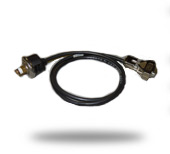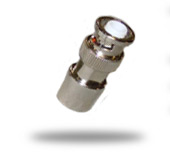What is a Cable Assembly?
A cable assembly is a carefully organized arrangement of interconnected cables, usually with 2 ends, designed to fulfill specific purposes. They serve as a vital link between various systems, providing essential connectivity and facilitating seamless operations. Through its structured configuration, a cable assembly plays a crucial role in enabling efficient transmission and effective communication.
Components of a Cable Assembly
A cable assembly comprises several key components, including:
- Cables or wires: these can be made of copper or fiber optic materials, providing the medium for signal transmission.
- Connectors: RJ-45, USB, OR D-Sub are all examples of connectors, which establish the physical connection between the cables and the devices they interface with.
- Additional components: strain reliefs. backshells, and protective jackets, are examples of additional components of a cable assembly, which enhance the assembly's durability, provide mechanical support, and offer environmental protection.
Cable Assembly Advantages
Cable assemblies offer numerous advantages in various applications, including:
- Enhanced Signal Integrity: Cable assemblies minimize signal degradation and interference, ensuring high-quality and reliable transmission.
- Simplified Installation: Pre-assembled cable assemblies save time and effort by providing plug-and-play solutions, reducing the need for complex wiring and individual component assembly.
- Improved Reliability: Cable assemblies undergo rigorous testing to ensure they meet industry standards, resulting in dependable performance and reduced risk of connectivity issues.
Use Case of Cable Assemblies
Cable assemblies find extensive use in diverse industries and applications. They are widely employed in telecommunications for connecting network devices and establishing data connections. Cable assemblies are also essential in the automotive industry, enabling electrical connections in vehicles for various systems and components. Additionally, cable assemblies are utilized in aerospace and defense sectors for applications such as avionics, radar systems, and communication equipment.
What is a Wire Harness?
A wire harness refers to a meticulously organized arrangement of interconnected wires. It is designed to provide a structured and efficient means of transmitting electrical signals within a system. Wire harnesses are engineered to optimize performance and ensure proper electrical connectivity, offering a neat and organized solution for wiring applications.
Components of a Wire Harness
A wire harness consists of various components that facilitate efficient electrical connections, including:
- Wires: These conductive elements carry electrical signals between different components.
- Terminals: They provide the interface for connecting wires to other devices or components.
- Tapes or Sleeves: These protective coverings insulate and secure the wires within the harness, preventing damage or short circuits.
Wire Harness Advantages
Wire harnesses offer several advantages in electrical systems and installations, including:
- Simplified Installation: Wire harnesses streamline the wiring process by providing a pre-assembled solution, reducing installation time and effort.
- Enhanced Reliability: The organized and protected arrangement of wires in a harness reduces the risk of electrical shorts, loose connections, and wire damage, resulting in improved system reliability.
- Improved Serviceability: Wire harnesses facilitate easier troubleshooting and maintenance as individual wires are clearly labeled and organized, allowing for quicker identification and replacement of faulty components.
Use Cases of Wire Harnesses
Wire harnesses are widely utilized in the construction industry for electrical installations in buildings and infrastructure projects, ensuring efficient power distribution and connectivity. They are also widely used in the medical field for medical devices and equipment, providing organized and reliable electrical connections. Moreover, wire harnesses are employed in the entertainment industry for stage lighting, audio systems, and production equipment, enabling seamless connectivity and control.
Key Differences Between a Cable Assembly & Wire Harness
The key component differences between cable assemblies and wire harnesses lie in their construction and additional components. Cable assemblies usually have only 2 ends, and primarily consist of cables or wires and connectors. In contrast, wire harnesses encompass not only wires and connectors but also additional components such as terminals, protective sleeves, tape, and other accessories that facilitate secure and organized wiring. The number of ends in a wire harness can vary based on the number of wires or circuits that need to be connected to different components or devices within a system.
When to Choose Either Option
Choosing between a cable assembly and a wire harness depends on the specific requirements of the application. A cable assembly is typically preferred when the primary focus is on transmitting signals between devices or components, and a simpler interconnection solution is needed. On the other hand, a wire harness is ideal when there is a need for organized, bundled and protected wiring with additional components, particularly in complex installations where multiple wires need to be routed and secured together.
Cable Assembly and Wire Harness Manufacturer
Custom Wire, a leading provider of electrical solutions, offers a wide range of capabilities for both cable assemblies and wire harnesses. With expertise in design and manufacturing, we can create custom cable assemblies tailored to specific application needs, utilizing a variety of connectors, cables, and protective elements. Additionally, our capabilities extend to wire harnesses, delivering organized and reliable wiring solutions, complete with terminals, protective sleeves, and other necessary components. Contact us today for a quote!






